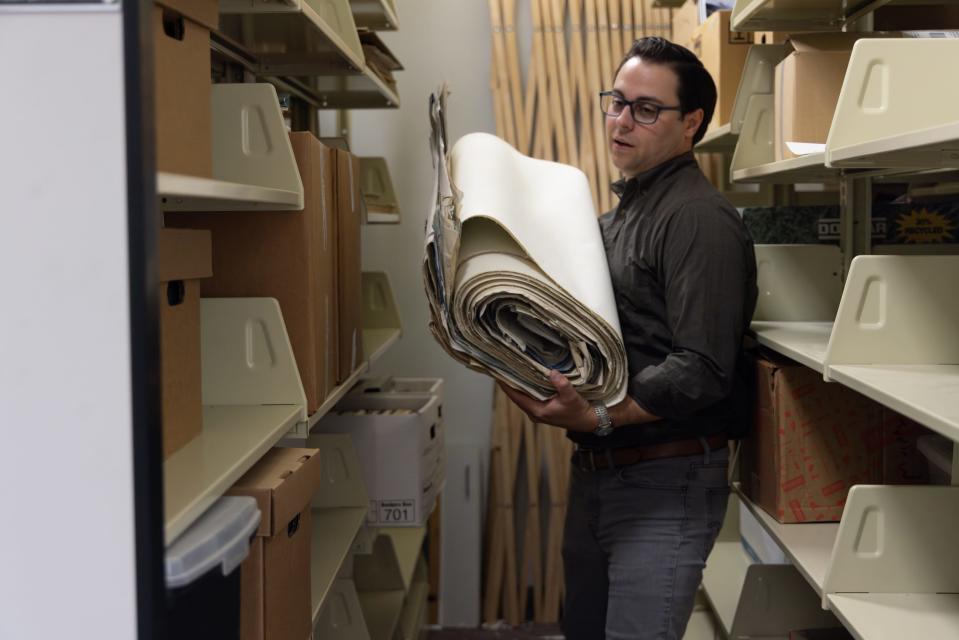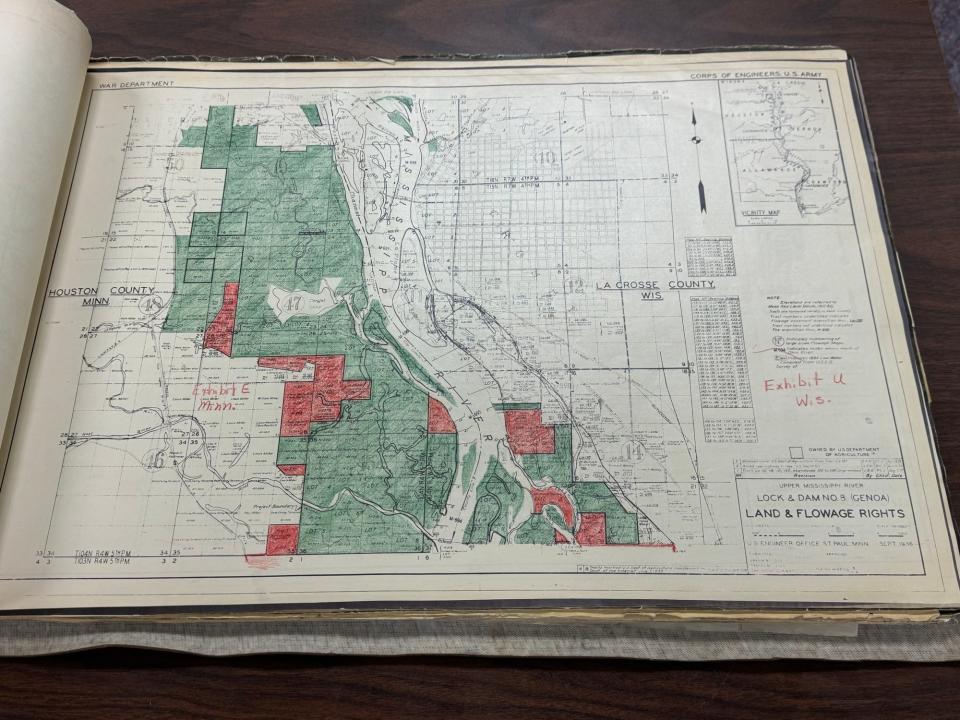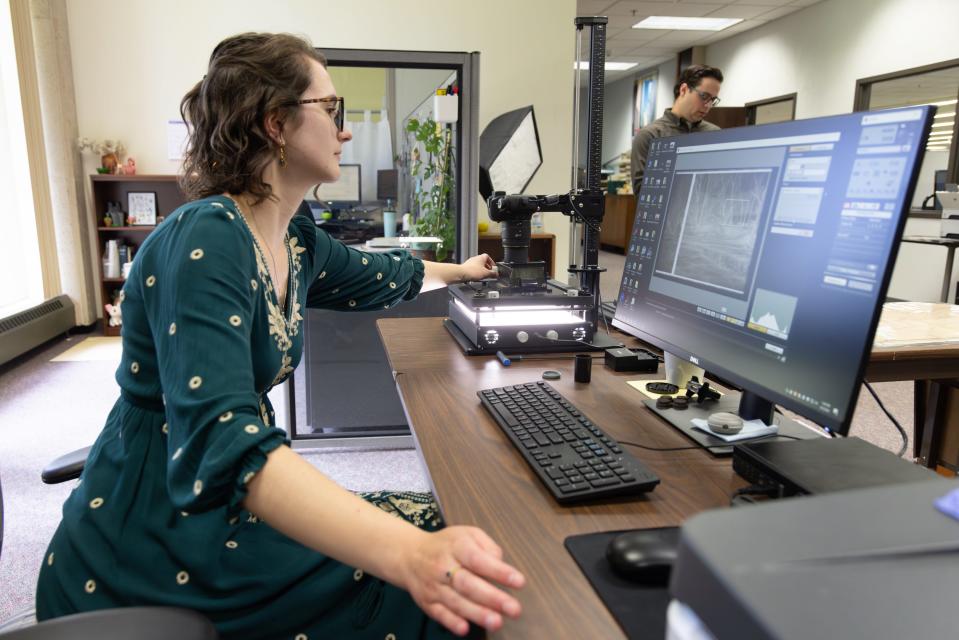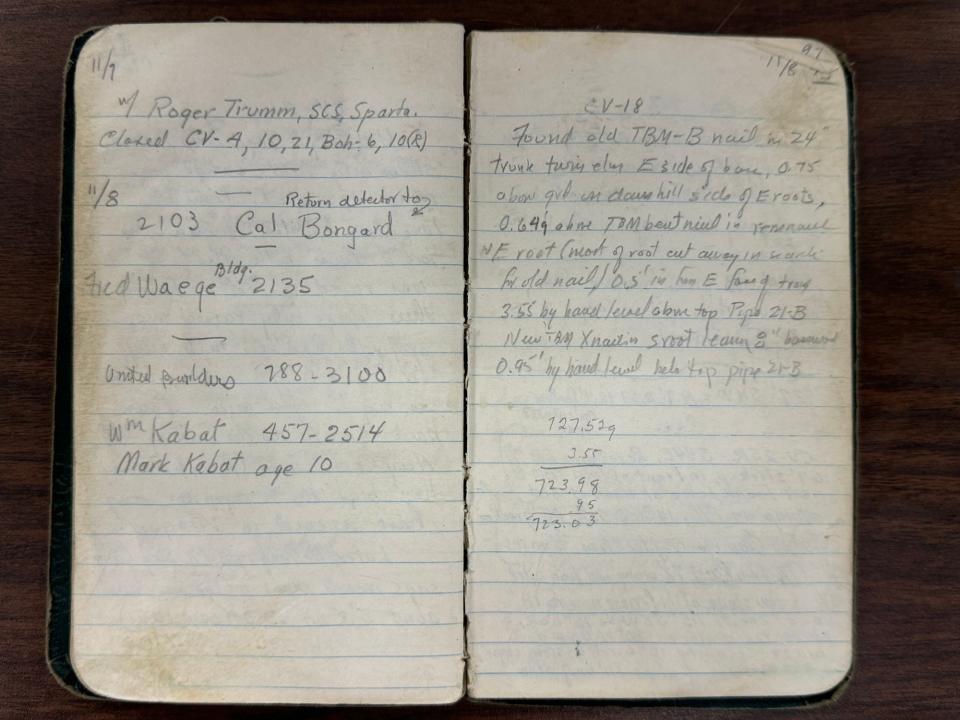Driftless River Initiative could turn University of Wisconsin-La Crosse library into the place to go for Mississippi River history
In 1920, a local newspaper publisher turned politician donated his private library to the University of Wisconsin-La Crosse, containing numerous historical works that detailed the development of the upper Mississippi River valley.
What followed began as a trickle and turned into a steady flow: The school's Murphy Library became an informal holding place for photos, maps, journals and field notes telling the story of the river and the geographically unique Driftless region that surrounds it. It made sense for the university, which isn't far from the banks of the Mississippi.
After a while, digital collections librarian David Mindel thought there needed to be a way to tie the materials together — to harness their potential for a scientific, economic, cultural and historical accounting of one of America's great rivers and raise the library's profile for soliciting more.
On July 22, library staff announced the Driftless River Initiative, meant to do just that.

More: Mississippi River runoff is not just a Gulf problem. It impacts health, recreation upstream.
"I think the potential is endless in terms of where researchers can take this, and as a librarian, I'm able to see the overlap and interconnectedness of it all," Mindel said. "That's really why I think it's important to label this as something more than just random collections — to try to make it into something more."
Collections include steamboat photos, river maps, birding journals
The initiative simply gives a name to something that's been in the works much longer. Building on the 1920 donation, the library has received thousands of historical photos of steamboats, which played a major role in the development of the Mississippi and its tributaries. Some of the photos are the oldest of the river-related materials housed at the library, Mindel estimated, dating back to the 1850s.
The collections also include research from Stanley Trimble, professor emeritus at the University of California, Los Angeles, who spent decades studying agriculture and sedimentation in Wisconsin's slice of the Driftless region, and from the late Stafford Happ, who was publishing papers in the 1940s about the area's soil.
There are river maps from the U.S. Army Corps of Engineers, some of which show how it flowed before the implementation of the locks and dams in the 1930s, which forever changed the look of the upper Mississippi. There are maps and charts from the beginnings of the Upper Mississippi River National Fish and Wildlife Refuge, established in 1924. Mindel is working on adding more recent works into the collection, such as Stories from the Flood, a project from the Driftless Writing Center to preserve the experiences of residents who lived through catastrophic flooding in southwestern Wisconsin in 2018.
More: 240,000 acres of the Upper Mississippi have been unspoiled for 100 years. But concerns mount.
More: Here's how the locks and dams on the Mississippi River work, and why they exist
Mindel said his favorite part is looking through photo negatives that the library acquires, which have to be processed before the images on them can be seen. He described it as "treasure-hunting."
He also enjoys the personal journals and field notes that are part of these collections, including from Fred Lesher, a former UW-La Crosse professor and avid birder. The library has 13 volumes of Lesher's handwritten birding notes.

"You're getting unfiltered thoughts," Mindel said. "It's not a published paper or some other formal document. It's a person's own personal thinking."
There are plenty of formal documents, too, including publications and surveys from the Upper Mississippi River Conservation Committee dating back to the 1940s. Materials were donated as recently as last week by the Mississippi River Regional Planning Commission, a Wisconsin group that works on economic development along the river.
Historical artifacts could provide a deeper connection to the Mississippi River
The presentation of the Driftless River Initiative is still in nascent stages — people who want to view steamboat photos or other collections can visit the library or look online, Mindel said, but there's no formal exhibit.
That's because many of the materials still need to be digitized. Realistically, Mindel said, that will take a long time. He's currently searching for grants that could help the library purchase larger scanners.
It's a crucial part of the process, though.

More: Tammy Baldwin offers bill to protect Mississippi River modeled on successful Great Lakes program
More: The Mississippi River is central to America's story. Why doesn't it get more love?
"If (it's) not known that we're just sitting on these things, essentially, they don't exist," Mindel said.
Once people know what's there, he's hopeful it will open the door for researchers to make connections between subjects and create new things. Looking at the pre-lock and dam river maps, he said, he imagined an app people could download as they cruise the river to see what it once looked like.

Mindel said he thinks the collections will keep growing naturally over time. The library already has a reputation for steamboats and river science, he said, and having the formal initiative could turn it into even more of a hub.
Ultimately, he hopes it will more deeply connect residents to the stories of the river that shapes their region, which in Wisconsin can sometimes get overshadowed by the Great Lakes.
"The nation itself has this long connection to the Mississippi River ... you could define things by the Mississippi, in terms of your place. Sometimes it's forgotten, that significance," Mindel said. "What I'm hoping is this elevates the river a bit as this major freshwater resource, and the way that folks in the Driftless area identify with the river and with the area in general."
Madeline Heim is a Report for America corps reporter who writes about environmental issues in the Mississippi River watershed and across Wisconsin. Contact her at 920-996-7266 or mheim@gannett.com.
This article originally appeared on Milwaukee Journal Sentinel: UW-La Crosse library launches Driftless River Initiative

